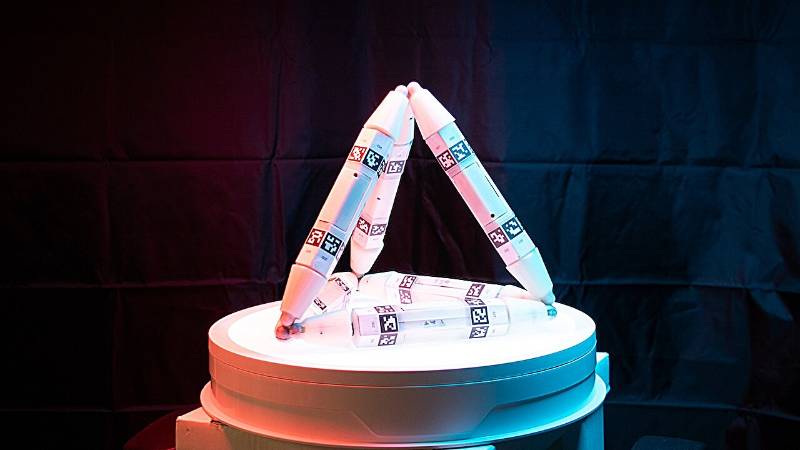Imagine robotic colonies that live off the land, adapt over the years, and evolve without human aid. It may sound like fiction, but Columbia’s robots are proving it’s already underway.
In a moment that blurs the boundary between machine and life, researchers at Columbia University have engineered something astonishing: robots that can grow, heal, and evolve that too by consuming other machines. This isn't just a novel engineering trick.
It's the emergence of a new form of machine autonomy, rooted in biology-inspired design and the concept of robot metabolism. These robots can detect when they're damaged, search for parts in their environment, and absorb or exchange them like digital organisms reshaping their own bodies to meet new challenges.
Introducing Robot Metabolism
Robot metabolism refers to the ability of machines to physically absorb, digest, and integrate resources from outside themselves, just as biological organisms metabolize food for energy and growth.
Columbia's robots do this through modular components known as Truss Links, each capable of:
- Expanding from 28 cm to 43 cm
- Connecting at multiple angles via magnetic connectors
- Reorienting themselves to build structures or limbs dynamically
- Operating without exact positioning, thanks to auto-aligning features
- These modules serve as the functional anatomy of the robot - its bones, limbs, and repair kits all rolled into one.
In this design, a robot is not a static machine, but a living structure that is growing, adapting, and healing using available material.
Experiments That Prove the Concept
The research team conducted a series of tests to demonstrate the system’s intelligence and versatility:
1. Mobility Boost: A tetrahedral robot assembled an additional Truss Link as a walking stick, which enabled it to move downhill 66% faster. Once it reached level ground, it removed the limb.
2. Self-Healing: When a robot lost a limb, it automatically sourced a replacement from a nearby inactive robot, restoring full function.
3. Reconfiguration: Multiple robots exchanged parts based on their needs, if one required a longer reach, another would donate a segment and continue operating in a reduced but functional form.
4. Shape Evolution: Robots began in 2D configurations and gradually evolved into more complex 3D forms, mimicking morphogenesis seen in embryonic development.
Use Cases That Could Redefine Robotics
The implications of this are massive, not just for robotics but for how we build, deploy, and interact with machines in the real world.
1. Space Missions
On planets like Mars, self-evolving robots could scavenge from damaged units, adapt to terrain, or build habitats with limited material. Human intervention would be minimal, resilience and autonomy are key for long-duration space missions.
2. Disaster Zones
Rescue bots could grow larger to carry debris or shrink to fit through tight spaces, healing themselves as needed during a mission. No downtime. No technician needed.
3. Industrial Automation
Swarm robots could repair each other and evolve into new tools depending on the changing tasks of a factory floor.
4. Military or Surveillance
Machines could be deployed in enemy terrain, adapt their shape or mobility based on terrain, and blend into or reassemble from spare parts.
Philosophical & Scientific Depth
What makes this so radical is that it mirrors biology at a structural level, not just in intelligence:
- Modularity = Cells
- Assembly = Growth
- Self-repair = Healing
- Cannibalization = Resource competition
- Swapping parts = Cooperative behavior or social metabolism
These aren't just machines with AI they’re machines with instincts. This positions robotics at the intersection of life sciences and engineering. The goal isn’t to simulate life but to give machines the benefits of life: adaptability, survivability, regeneration.
“These robots grow, adapt, and repair using materials from their environment or from other robots,” said Prof. Philippe Martin Wyder, lead researcher.
“This is not just autonomy in thought, it’s autonomy in form.”
Ethical Questions & the Future of Robotic Ecologies
As with any powerful technology, this innovation raises some vital ethical and philosophical questions:
- Could robots start hoarding or competing for parts?
- Who owns a robot that’s built from many others?
- What limits should exist on self-replication and cannibalism?
- Should robots be able to prioritize survival over instructions?
While today’s systems are confined to modular setups in the lab, future iterations could evolve unpredictably. Hence, researchers advocate careful governance, ethical boundaries, and transparency in deployment.
What Comes Next?
This innovation is a precursor to artificial evolution. A future where machines not only learn new skills but change their bodies to perform them. From sci-fi to real science, the concept of machine ecosystems, where robots sustain themselves, adapt, and even collaborate is now a very real possibility.


Discussion
Start the conversation
No comments yet
Be the first to share your thoughts on this article. Your insights could spark an interesting discussion!